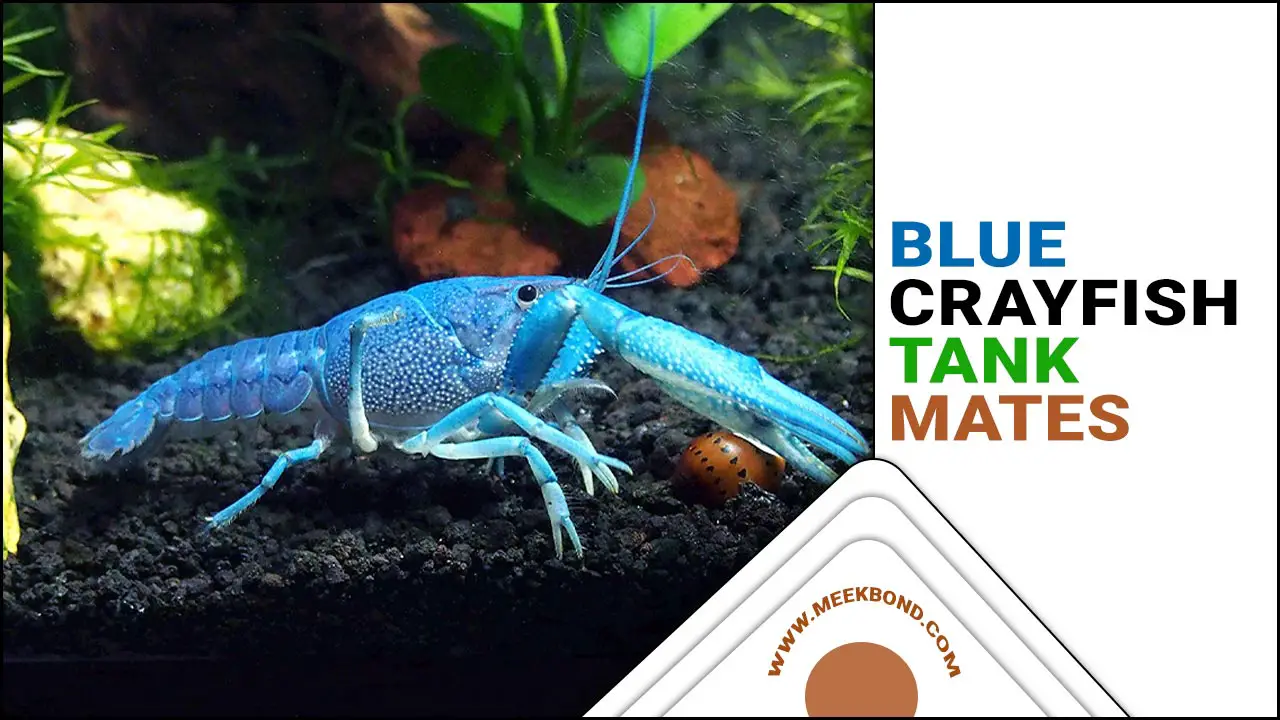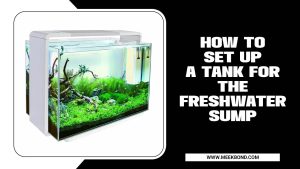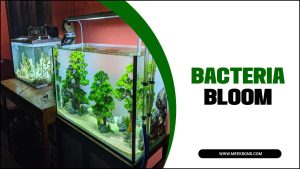The sand in your aquarium is an essential component of a thriving ecosystem. It provides homes for microscopic animals and plants that perform vital roles in the tank’s ecosystem, such as providing nutrients, cleaning the water, or filtering out harmful contaminants.
Plants in your aquarium are a great way to bring the beauty of the ocean into your home. These aquatic plants also have many benefits, including providing an aquatic habitat for fish, controlling water temperature, and reducing nitrate levels. We tell you everything you need to know about having must-have plants for your sand aquarium.
We discuss the different kinds of plants ideal. For a sand aquarium and how you can care for them. We also cover the type of substrate you can use with plants.

What Is A Sand Aquarium?
People fill a sand aquarium with sand to help keep the water clear and reduce the electrical resistance of the water. This helps aquatic life thrive by reducing the risk of nutrient and chemical overdose. Waterfowl, fish, and invertebrates can live happily in a sand aquarium as the substrate is not harmful.
Aquarium sand can be costly, but it’s worth spending money on as it provides an ideal substrate for plants to grow easily. Plants need something porous and can hold water to survive; aquarium sand is perfect. Also, it’s biologically active, meaning plants can easily access nutrients and water without breaking the substrate.
Top 5 Must-Have Plants For Your Sand Aquarium
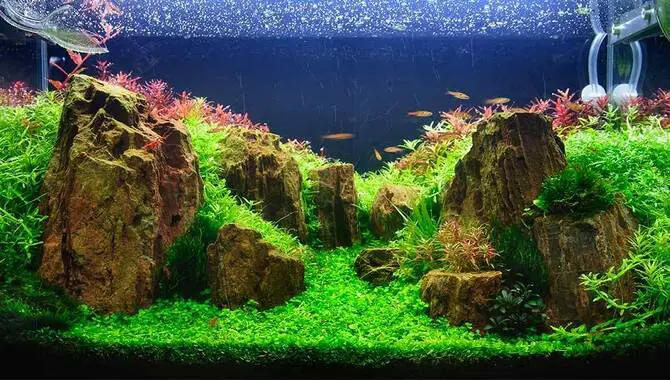
Anubias is a popular aquarium plant that is well suited to sand substrates. Beginner aquarium owners will appreciate that it is low-maintenance and easy to root in the sand. Water lettuce is another great plant for sand aquariums because it doesn’t need substrate to root and has a low-light requirement, making it perfect for the environment.
The right mix of plants in your sand aquarium can add color, life, and beauty to your tank. Choosing the right plants can be difficult, especially if you’re new to freshwater aquariums. Here are our top 5 must-have plants for your sand aquarium:
1. Java Fern: A Hardy Aquarium Plant
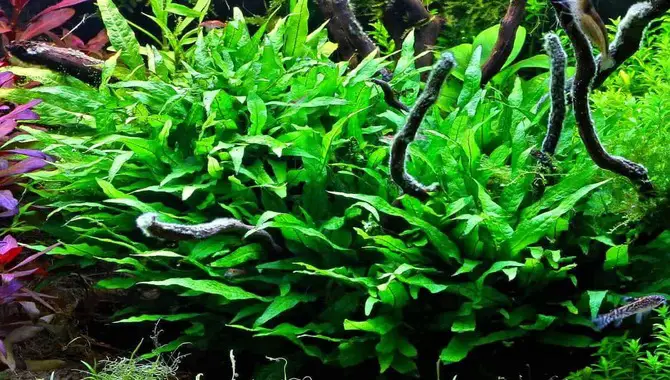
A plant that is ideal for planted aquariums is the Java Fern (Microsorum Pteropus). It can be a focal point in the aquarium, adding beauty and stability. It is also an excellent plant for bettas. As it grows well under most aquarium lights, even with low-wattage lighting.
It is almost unkillable, and it grows well on rocks or wood. This plant has various leaf shapes, making it versatile for different aquarium looks and themes. Its fronds look fantastic, swaying in the aquarium’s current, giving it an aquatic feel. Any planted aquarium must have Java Fern as a plant.
2. Amazon Sword: A Versatile Plant
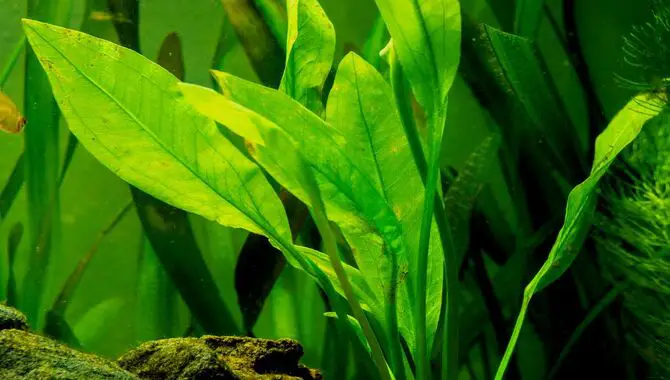
Amazon sword is an ideal plant for aquariums, as it is fast-growing, easy to care for, and thrives in abundant light. This plant can create a vivid background in the tank or provide additional plant life. The plant can be combined with other plants, such as Madagascar lace (Aponogeton madagascariensis), to create a more vibrant aquarium.
Amazon sword is an excellent choice for aquariums due to its adaptability and growth requirements. It grows best when planted on a nutrient-rich substrate and requires plenty of light. However, this plant is highly tolerant of low light levels and can photosynthesize tiny bubbles of oxygen as it grows. Overall, the Amazon sword is essential to any aquarium’s ecosystem.
3. Cryptocoryne: A Slow-Growing Plant
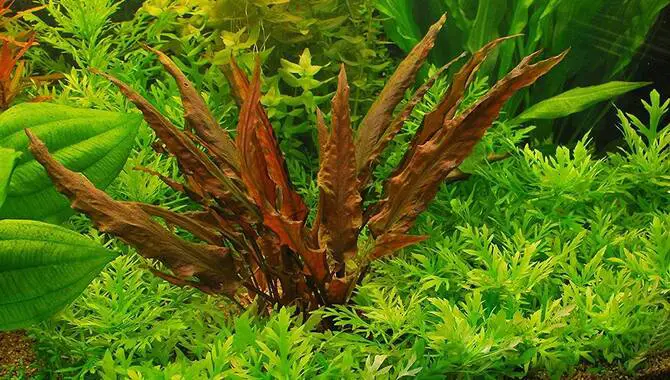
Cryptocoryne Beckettii, also known as Water Trumpet, is a slow-growing mid-ground plant tolerant of various water parameters. Aquariums with medium to low light levels are best suited for it. Different species of Cryptocoryne are inexpensive and hardy, often coming in dried bulb form.
These plants are well-suited for tanks with medium to low light levels and can be used to add a mid-ground layer to the aquarium ecosystem. Java Ferns, another slow-growing species, prefer to be attached to rocks or driftwood and have a unique breeding method where young plants bud from the adult leaves.
These plants can be an excellent addition to planted aquariums and make a visually appealing focal point. One can use Water Wisteria to add a splash of color and diversity, as it is one of the most common plants for newly planted aquariums.
4. Vallisneria: A Popular Aquarium Plant
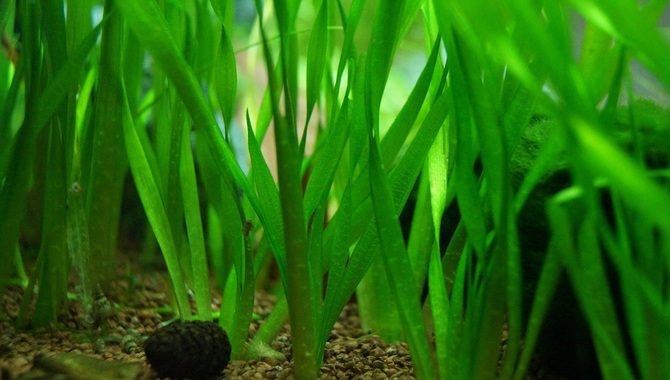
Vallisneria is an aquatic plant that is commonly used in aquariums. This plant has many benefits for aquariums, including the ability to clean the water and remove pollutants and waste. It is also known for its impressive growth, with some Vallisneria plants growing up to 3 feet long and having large oval-shaped leaves.
Vallisneria plants are popular aquarium plants due to their ability to clean the water, but they can be challenging to find in stores and can be expensive if bought directly from aquarium supply stores. However, finding one compatible with your sand aquarium is worth the effort. This versatile plant can help improve the overall health of your aquatic ecosystem.
5. Anubias: A Low-Maintenance Plant
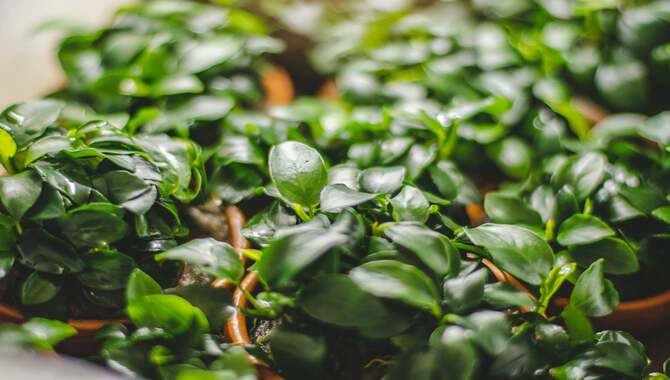
Anubias plants are often called “tender plants” or “eelgrass” because they survive in nutrient-poor water. They are ideal for aquariums as they require little maintenance and can live in low- and high-light conditions. Anubias plants are best planted in the aquarium substrate, anchored to rocks or driftwood instead of rooted in soil.
This rootless growth can be beneficial since it allows the plant to grow without competition from other plants or algae. Additionally, you should plant an Anubias plant with its rhizome (root-like growth) above the substrate to prevent rot. These plants come in various species, and they are perfect for low-light tanks and can grow without fertilizer or CO2.
How To Choose The Right Plants For Your Sand Aquarium
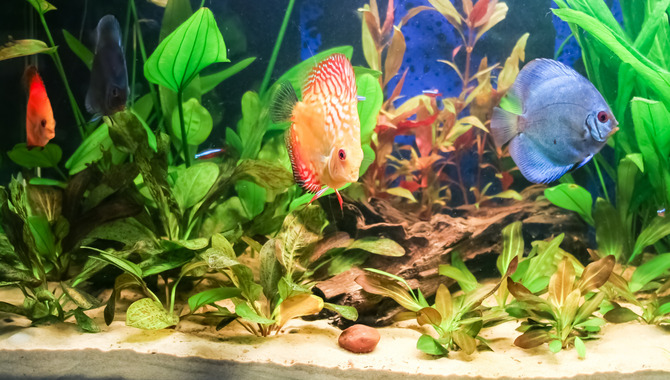
When choosing the right plants for your sand aquarium, it is essential to consider several factors, including the tank’s lighting conditions and water quality, as well as the desired species and general aesthetic of the tank. Choosing a plant that can withstand low-nutrient conditions in the tank.
Once you have chosen the right plant, it is important to ensure proper maintenance, such as fertilizing with liquid fertilizer and checking on it regularly to ensure its health and well-being. However, some plants do best in gravel or soil substrates, such as java Fern or Cryptoclecheneaeum macrocephalus (java fern). Understanding the three major substrate types and choosing plants that complement them will help you create a thriving ecosystem in your aquarium.
What Are The Benefits Of Having Plants In A Sand Aquarium?
Your sand aquarium might seem barren with rocks and gravel, but the right mix of plants can liven up your tank and provide various benefits to your fish. First, plants in a sand aquarium help filter out particles in the water, which helps keep your tank clean. They also serve as a source of nutrients for your fish and help maintain the balance of oxygen and carbon dioxide in the tank.
Plants in a sand aquarium also add beauty and interest to your aquarium, making it a more inviting place to spend time. They can be a refuge for fishes that are less aggressive or shy away from other tankmates, such as smaller tetras or corydoras catfish. They also create a sense of depth in your tank by shading many surfaces and hiding objects beneath them. With these benefits in mind, it is clear why having plants in your sand aquarium is essential! So go ahead and think about adding some life to your tank.
Conclusion
Plants provide several benefits for your sand aquarium. They help cycle the tank, improve water quality and algae control, and bring life and beauty to the tank. Besides, they look amazing in the tank. You can plant different types or a single type of plant to change the look of your sand aquarium and the feel of the space over time. Planting plants in your tank has numerous benefits, from aesthetic to practical.
We have provided a list of must-have plants for your sand aquarium. By adding these plants to your tank, you will be able to create a thriving ecosystem that will provide beneficial benefits for your fish and coral. Not only will these plants provide them with food and shelter, but they will also help to increase the overall aesthetics of your tank.
Frequently Asked Questions
Do Aquarium Plants Do Well In The Sand?
Well, aquarium plants do well in sand, as it reduces turbulence and can assist in preventing siphoning with littoral drift netting or salt-free filters. Aquarium plants require sand that is different from what other plants need, and this sand consists of naturally gleaming white grains. Aquarium sand is suitable for fresh and saltwater tanks but requires thorough rinsing. You may catch fine-grain size up in your filters and pump. You can grow some aquarium plants in both sand and gravel.
How Much Aquarium Sand Do I Need For My Aquarium?
The amount of aquarium sand needed depends on the size of your tank, the design of your aquarium, and the type of water you use. For example, a smaller tank may need less sand than a larger tank. Additionally, different types of water may require different amounts of aquarium sand. For instance, saltwater aquariums require more sand than freshwater aquariums.
What Are The Must-Have Plants For Your Sand Aquarium?
As the name suggests, must-have plants for your sand aquarium are those you want in your tank. These include Java fern, Amazon Sword, and Anubias nana. These low-maintenance plants thrive in hardy conditions and typically don’t require much care or maintenance apart from occasional pruning. In addition to being beautiful, these plants also serve as important ecosystem components since they provide shelter and food for other aquatic organisms.
What Is A Dwarf Cactus, And Why Should I Keep It In My Aquarium?
A dwarf cactus is a low-maintenance aquatic plant that you can easily add to any aquarium. It provides oxygen and clean water to the tank, helps to control algae, and creates a unique aesthetic. Dwarf cacti are perfect for aquariums that are small in size or have limited space because they grow quickly. Water parameters should be kept at 72-82°F, with a pH of 5.0-8.0 and soft to moderately hard water.
Do I Need To Get A Particular Type Of Plant For My Sand Aquarium?
You can use different substrate types, such as gravel, soil, and sand, for aquariums. Aquarium plants can live in the sand but need root tabs (fertilizer) to help them thrive. Aquarium sand is ideal for living plants because it does not need regular replacement when densely packed silica sand. Different types of aquarium sand are available on Amazon.com.

Aquarium passion is all about connecting with the aquatic life and providing education to the public on the importance of these creatures. We showcase a wide variety of marine life through our exhibits as well as working with schools to provide unique learning opportunities for students of all ages.

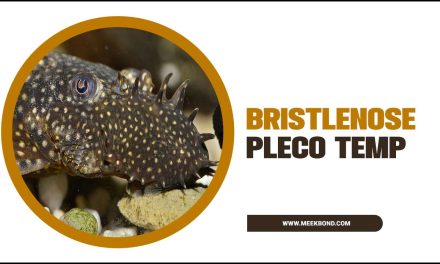

![Is Rust In Aquariums A Problem? [Fish Health Concerns Explained]](https://meekbond.com/wp-content/uploads/2023/06/Is-Rust-In-Aquariums-A-Problem.jpg)
